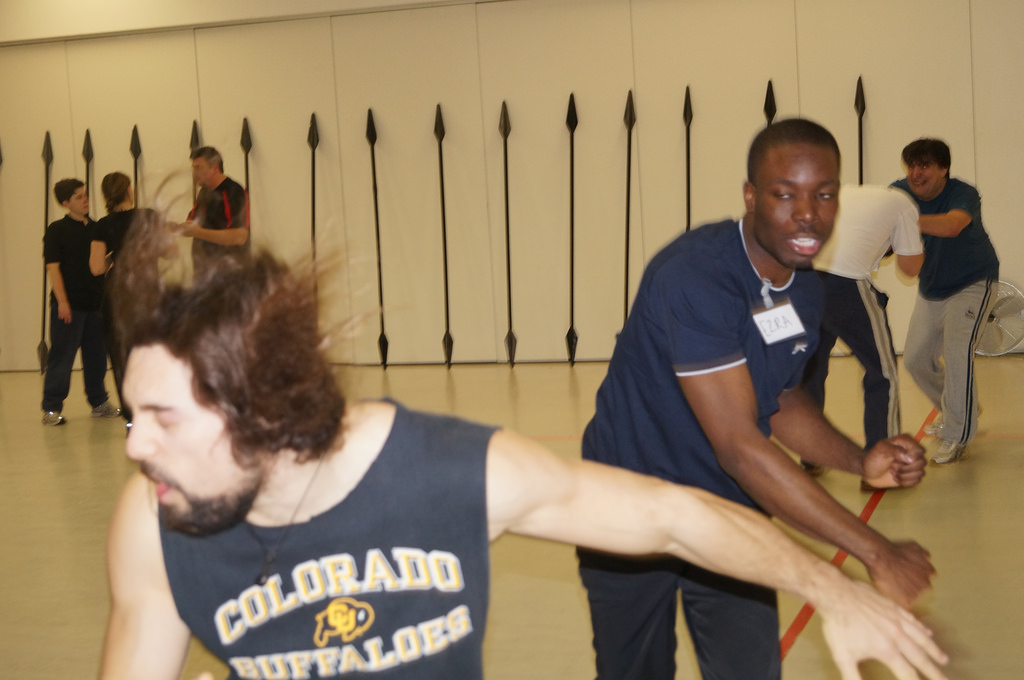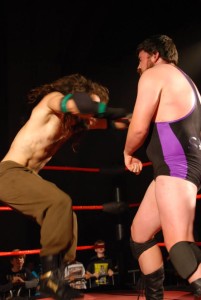Unarmed Screen Combat

Today was my first day of training in screen combat with the British Action Academy. I booked the course months ago and have been ridiculously excited ever since.
On the way to the venue, however, the exhaust fell off my car. Eventually, I managed to lash it back on using the cable that connects my mp3 player to my car. On the up side, I got to the venue: on the down side, I had to endure the radio – when did it become so terrible?!
Radio has always been pretty bad, but now it’s like eavesdropping on teenagers. Not that I would know what that is like or where you’d get the surveillance equipment… Ahem, moving on.
Warrior Masterclass

Day one of the Warrior Masterclass introduced us to the art of unarmed fighting, in the role of a football hooligan. Along with the medieval knight, Spartan warrior, pirate, ninja, gentleman duelist and special forces operatives, the hooligan makes up one of the many characters we must learn to play in order to pass this course.
The first thing we learned (after the massive depth of experience of our instructors and the foundations of screen combat known by the acronym BEDTRACS), was the importance of positioning with regards to the camera.
Then it was time to learn to fight, which involved learning to throw and react to difference strikes, including cross punches, straight punches, kicks, knees, hair pulls and head-butts. Once we had the hang of those moves, it was time to put them into a sequence and perform it – not only to the other members of the class, but for a camera too!
Luckily, the other members of the class are all awesome and lovely, so it wasn’t too intimidating to perform in front of them. However, fighting along a line whilst staying off-centre so the camera could see you both is much harder than I expected, especially when under pressure.
Hiding the Gap

For me, one of the most challenging elements of unarmed screen combat thus far has been overcoming the instincts of ten years of wrestling experience. Specially, this is related to contact.
When wrestling, I pull my punches – but they still make contact. It is minimal contact in a safe place but, when performing for a live audience that is all around me, it is better to make a little too much safe contact than miss and ruin everything.
Similarly, I am used to reacting to strikes when I feel the impact. If I react before the strike lands, it looks terrible for obvious reasons.
In screen combat, however, you do not make contact. In fact, you miss by a long way – about a foot! The key is to position yourself in a way that hides this gap from the camera and then react to the strike at the appropriate moment to make it look real. This is called Hiding the Gap.
Whilst practising this technique, I was fine. In fact, my experience in reacting to strikes helped because I didn’t have to think about what my body was doing; it just did it for me, whilst I concentrated on remembering the routine.
As soon as the pressure was on, however, I quickly reverted to my old habits: I started moving in way too close, almost making impact with my strikes and waiting for blows to land before reacting to them.

So far, I have been blown away by the quality of this course. I wasn’t sure what to expect, but the quality of tuition is simply outstanding. There are 20 people on the course, but the three instructors manage to spend a huge amount of time with each person to help develop their areas of weakness and point out their strengths.
Hopefully I won’t ache too much tomorrow!